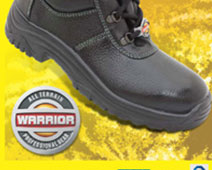As it is already said in our previous blogs, safety footwear is a must have to ensure your safety and security in the workplace. What becomes a little challenging here is the selection process of safety shoes because many people aren’t aware of the right tips. To make this otherwise daunting task easier, the safety footwear comes with a two or three letter code that defines their safety standards. Now, the question is what do the codes stand for? We’ll tell you.
The code usually begins with an S, which is for 200 Joule toe caps and a P for 100 Joule toe caps, which is less commonly used. Let’s now go through some basic ratings and understand the codes that will help you make the right choice.
SB
Shoes with SB code protect your toes from a 200 joules impact. Joule is the unit of energy and prevention form it protects your vulnerable toes from getting injured. These shoes also come with an oil-resistant outer sole.
SBP
Safety footwear with this standard are manufactured with a penetration resistant sole that prevents you from hurting your feet from sharp objects like nails. The protection is provided by inserting a stainless steel or aluminium in the sole. Safety shoes with SBP code are essential for workplaces where you deal with sharp objects.
S1 and S1P
These codes signify that the shoes have anti-static properties and are penetration resistant as well. They too like SBP shoes protect your feet from sharp objects. However, these shoes also come with an energy absorbing heel area.
S2, S3, S4 and S5
All these codes stand for sharp object penetration resistant shoes. But S2 shoes protect you from water penetration as well. S3 and S5 safety shoes come with a cleated outsole and S4 protects your feet from 200 joules impact, are water resistant and anti-static.
So we’re done with this post on safety footwear codes, but have a lot more to share with you about the safety shoes. Keep reading our blogs and for any queries, drop a comment below.








